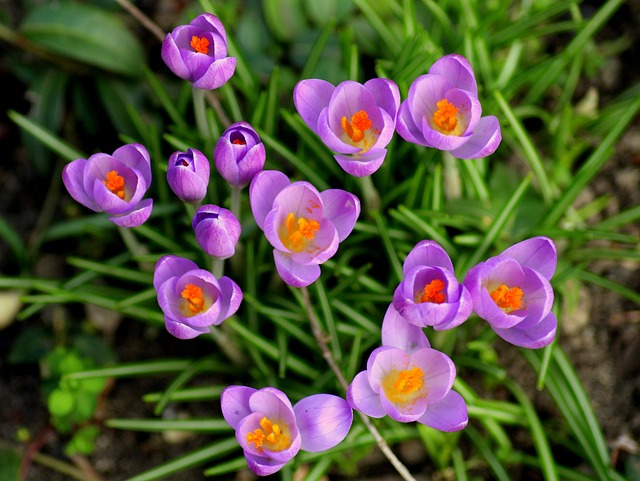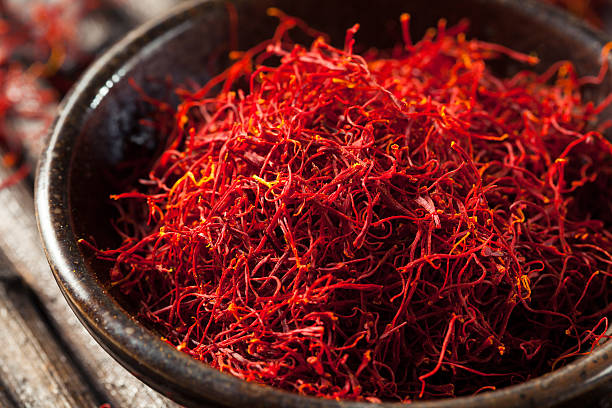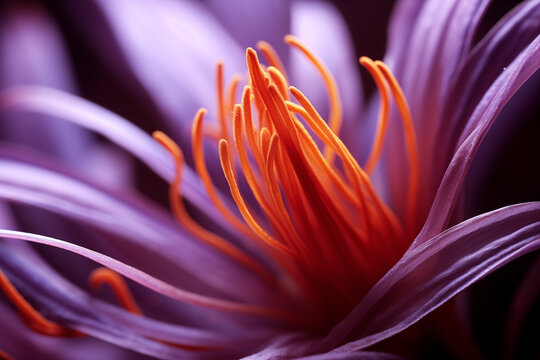
What is Saffron
Did you know that it each gram of Saffron takes 100gms of flowers?
Crocus sativus L (C. sativus), commonly known as saffron, is a small perennial plant belonging to the family of Iridaceas. This plant is cultivated in many countries including Iran, Afghanistan, Turkey and Spain.The stigmas of C. sativus are known to contain carotenoids, α-crocetin and glycoside crocin (responsible for saffron yellow color) and picrocrocin, the aglyconesafranal (responsible for saffron aroma)
Saffron is obtained from the stigma of the crocus sativus plant and is the most expensive spice in the world. Despite having a very fragile form, saffron is the only spice capable of enriching the food with taste, aroma and color. The price of saffron is high due to the high production expenses as the former requires utmost care during handling. Although the spice costs more per unit than other commodities, its high concentration of active components makes it an inexpensive commodity. It only takes a tiny amount of saffron to impart the spice attributes to the food.
Saffron (Crocus sativus L., family Iridaceae) is used traditionally for medicinal purpose in Chinese, Ayurvedic, Persian and Unani medicines. Saffron has been suggested to be effective in the treatment of a wide range of disorders including coronary artery diseases, hypertension, stomach disorders, dysmenorrhea and learning and memory impairments.Saffron, derived from Crocus sativus, is gaining research attention for potential therapeutic applications. Its diverse clinical applications extend to cardiovascular health, diabetes management, sleep quality, psychiatric illnesses, and rheumatoid arthritis. Saffron’s positive effects on blood pressure, glucose levels, cognitive function, and inflammatory markers contribute to its versatility. Additionally, carotenoids like crocin and crocetin suggest anti-cancer potential.

Saffron benefits
- Anti-depressant: Several interesting data have been reported about the antidepressant and anti-anxiety properties of saffron, the dried stigmas of Crocus sativus L., in several preclinical and clinical studies. In particular, a number of clinical trials demonstrated that saffron and its active constituents possess antidepressant properties similar to those of current antidepressant medications such as fluoxetine, imipramine and citalopram, but with fewer reported side effects.It’s a great herbal support to use to prevent post natal depression. Click here to read more.
- Nervous System disorders: The bioactive constituents such as apocarotenoids, monoterpenoids, flavonoids, phenolic acids and phytosterols are widely investigated in experimental and clinical studies for a wide range of therapeutic effects, especially on the nervous system. Some of the active constituents of saffron have high bioavailability and bioaccessibility and ability to pass the blood-brain barrier. Multiple preclinical and clinical studies have supported neuroprotective, anxiolytic, antidepressant, learning and memory-enhancing effect of saffron and its bioactive constituents (safranal, crocin, and picrocrocin). Thus, this plant and its active compounds could be a beneficial medicinal food ingredient in the formation of drugs targeting nervous system disorders. Click here to read more.
- Eye Health: Saffron has natural carotenoid compounds, which have been reported to possess a wide spectrum of properties and induce anti-inflammatory, anti-oxidative, and neuroprotective effects and their potential therapeutic use in ocular diseases (e.g., in age related macular degeneration, glaucoma, and diabetic maculopathy). Click here to read more
- Reproductive & Sexual Health: In female reproductive health, saffron appears promising for managing dysmenorrhoea, reducing menstrual pain, regulating hormonal fluctuations, and improving overall menstrual health. Click here to read more.
Saffron Uses
Tea: take about 10 stigmas per cup. infuse with hot water, cover and steep for 10 min or longer. Enjoy!
Supplement: 30 mg per day is a general recommendation, however depending on situation more can be taken. Please consult with you practitioner. A few brands that I like:
- Paradise Herbs, Saffr-Tone
- California Gold Nutrition, Saffron Extract with Affron
- Nutricost, Saffron, 88.5 mg
Food: Saffron has been used in dishes in Middle Eastern and Indian culture for centuries.
Word of Caution: Do not use Saffron when pregnant and during period as it promotes blood circulation.
Resources
After a thorough research, sharing below few links that I found helpful
Articles & Science Papers
Saffron (Crocus sativus L.) and Its By-Products: Healthy Effects in Internal Medicine
Saffron in the treatment of depression, anxiety and other mental disorders
Phytochemistry, quality control and medicinal uses of Saffron (Crocus sativus L.)
The Efficacy of Saffron in the Treatment of Mild to Moderate Depression
Safety and Efficacy of Saffron (Crocus sativus L.) for Treating Mild to Moderate Depression
Current Knowledge of the Antidepressant Activity of Chemical Compounds from Crocus sativus L
Collection of various research papers on Saffron
The effects of Crocus sativus (saffron) and its constituents on nervous system
Nutritional and health beneficial properties of saffron (Crocus sativus L)
Quality Standard
It is important to be aware of quality when purchasing Saffron as medicine. Saffron comes in different grades.The article below explains it well.

